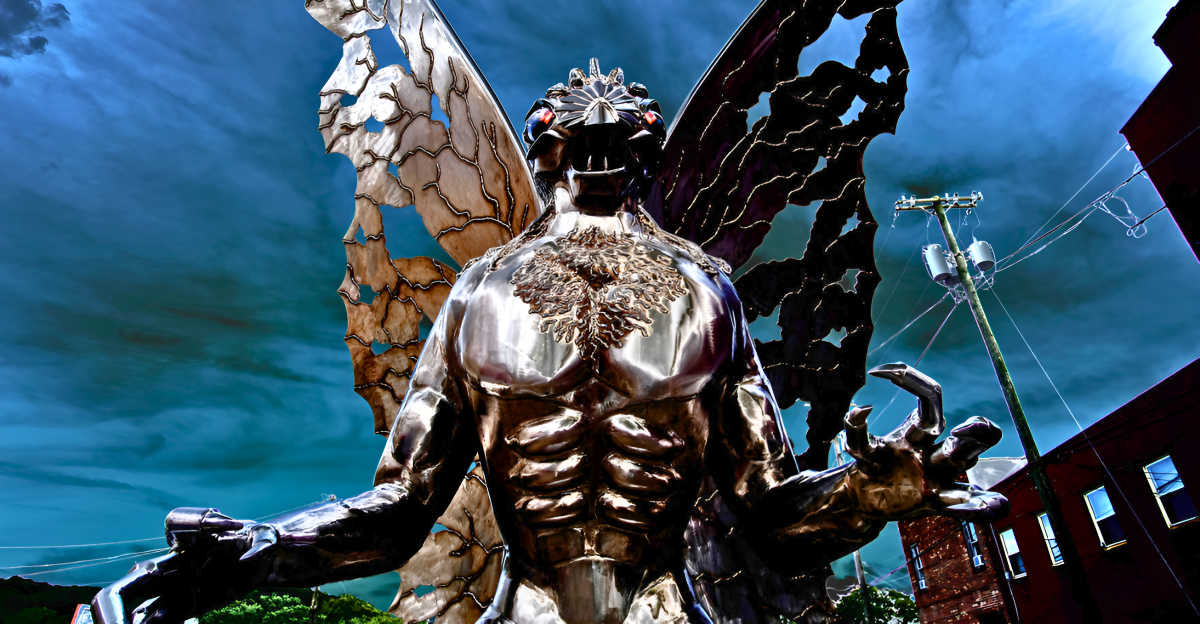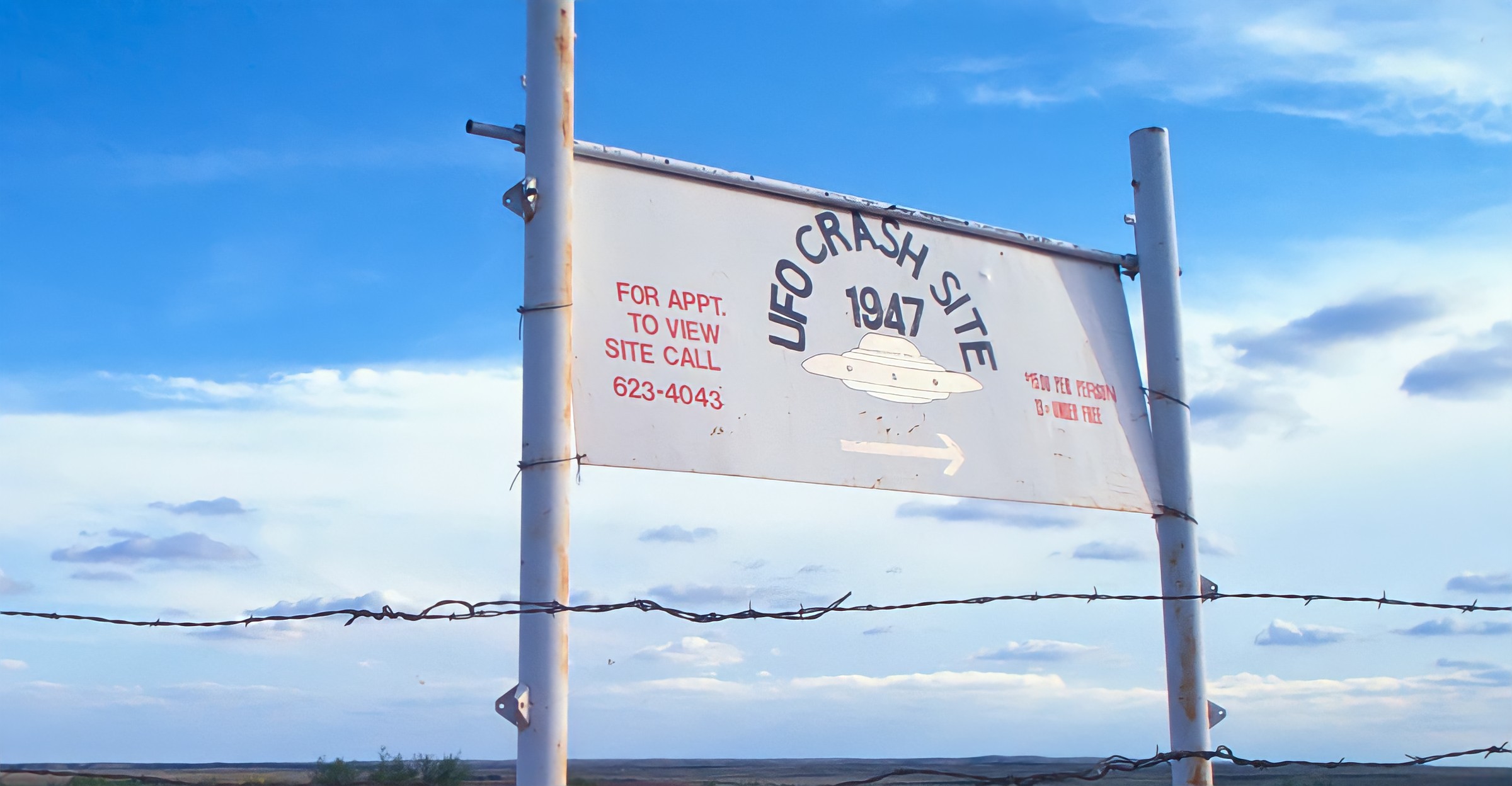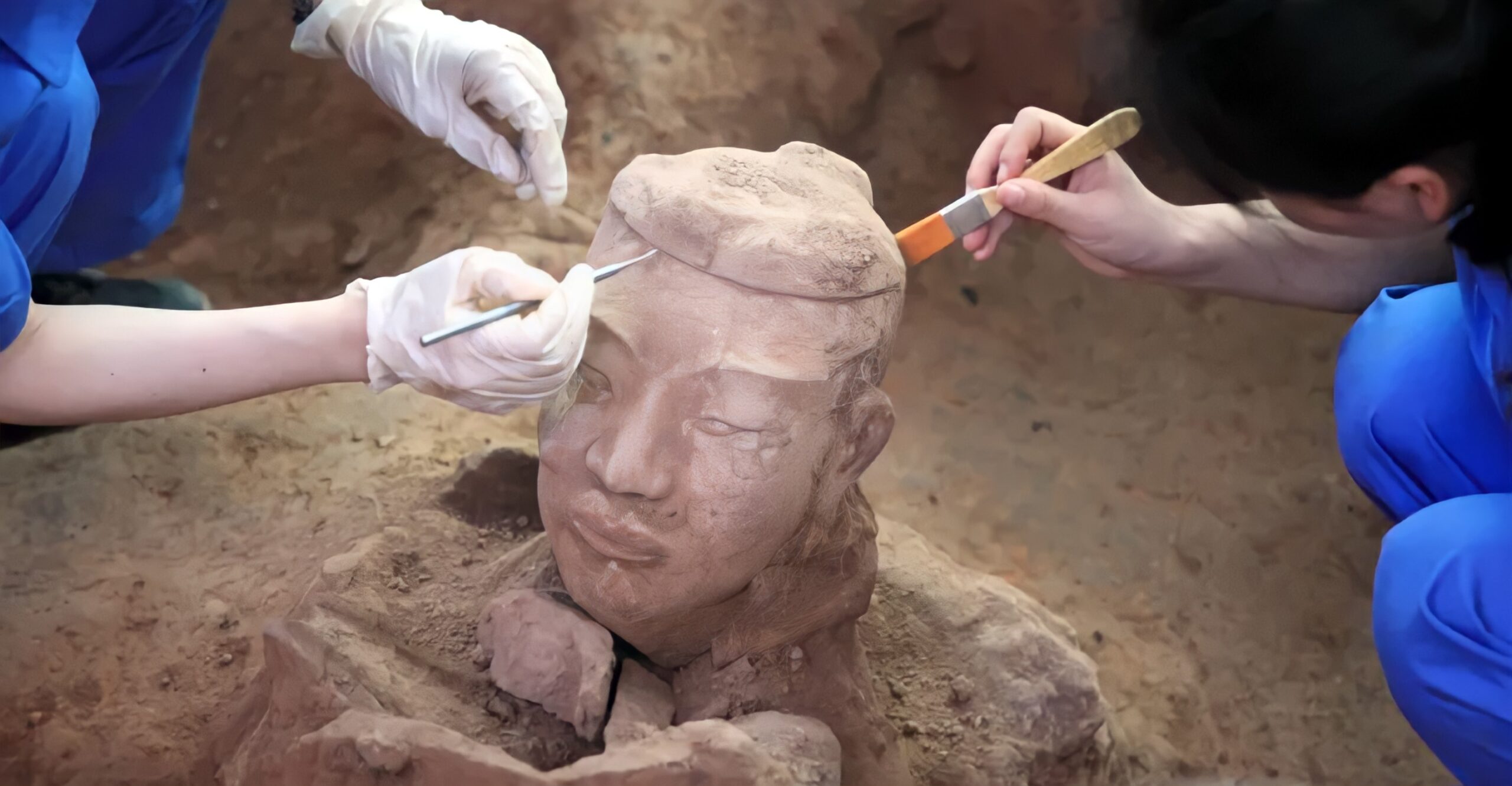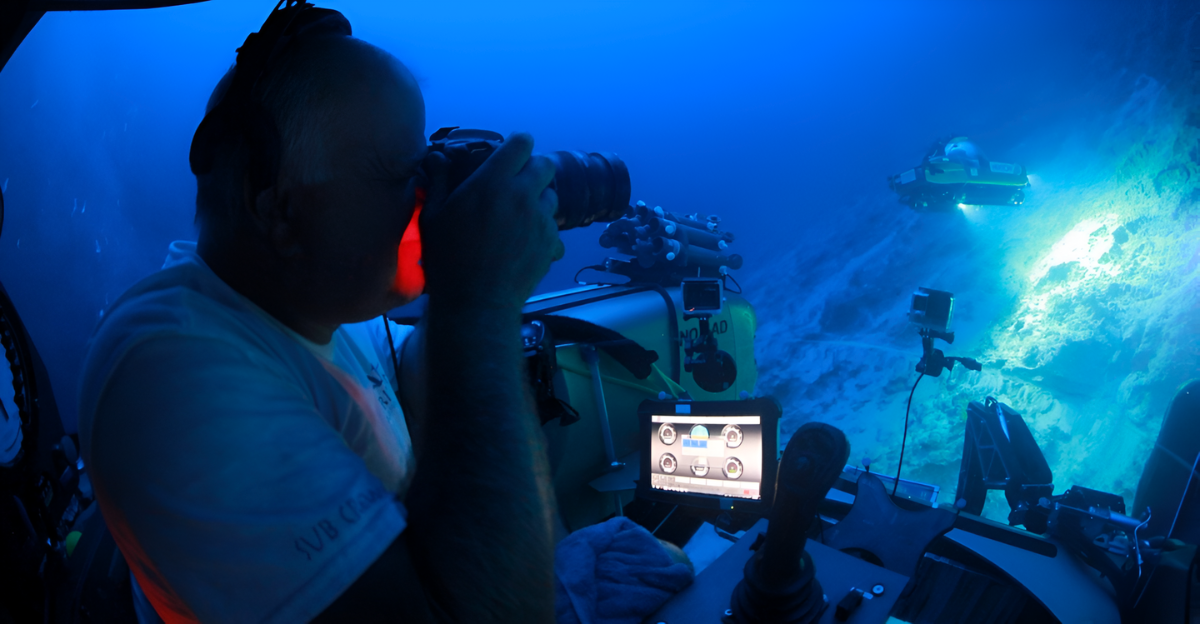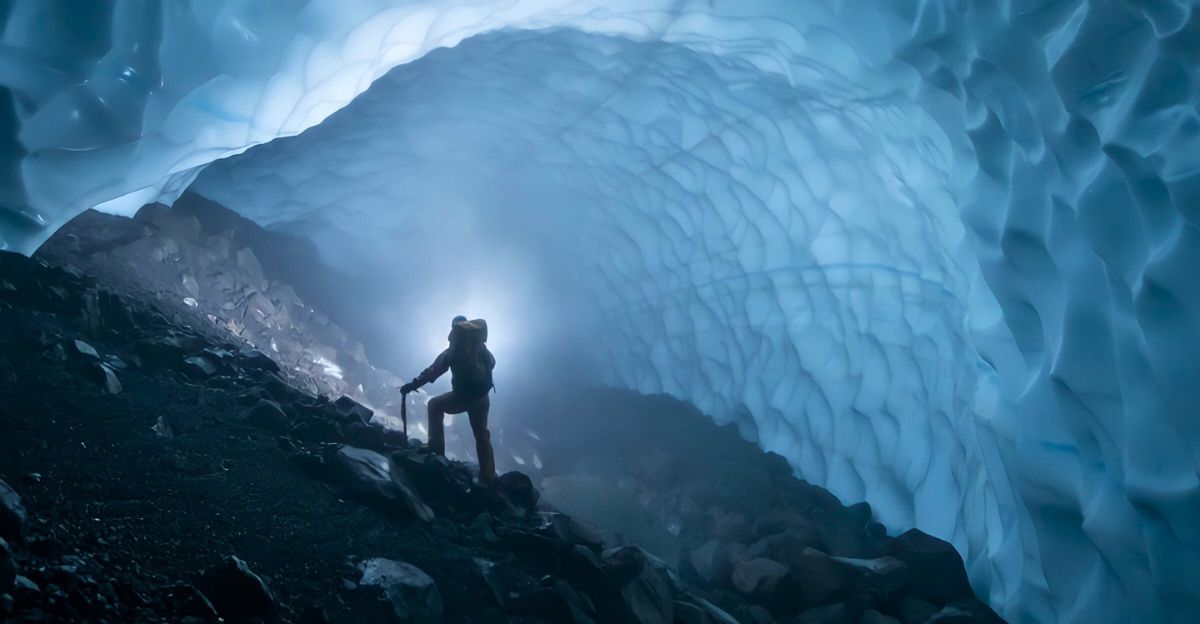
East Antarctica conceals more than snow and silence. Under its thickest ice, a half-billion-year-old secret has lain undisturbed. Initially hypothesized by a Soviet Cold War team, what is being concealed confounded geologists for decades.
And now, new research is stripping away layers of time to an ancient tale of cataclysmic disruption—and preservation. So what is actually beneath the ice? And why has it taken so long to reveal itself?
A Whisper from the Cold War

In 1958, Soviet researchers on an expedition to Antarctica discovered something amazing. Seismic equipment revealed what sounded like a tremendous mountain range—one as big as the Alps—under East Antarctica’s ice cap.
There were no peaks to look at, no bottoms to ascend. Only echoes somewhere below. It was a stunning discovery that left more questions than answers open. What made it? And how was it concealed for so long?
The Ghost Mountains of Antarctica
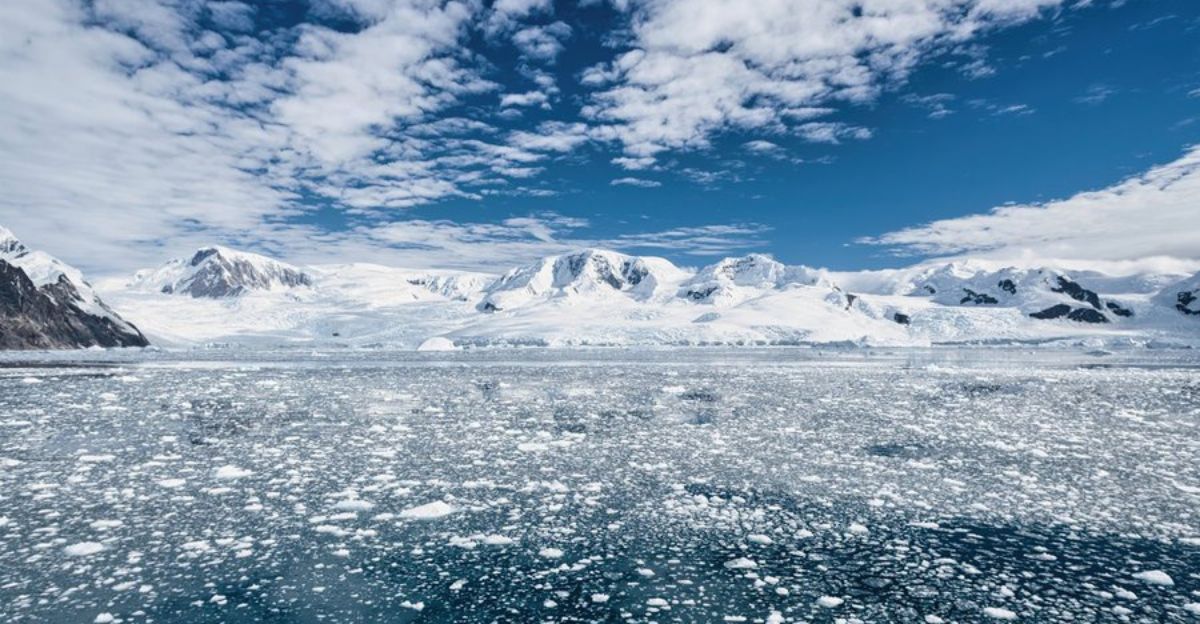
They have called them the Gamburtsev Subglacial Mountains. Most of the ranges that stick out of the ice halfway up are in smoothly tapering heights.
They were totally buried. Radar and seismic images finally revealed their massive depth and size. But they raised confusion: they shouldn’t be there.
Mountain ranges exist where tectonic plates collide with each other—but East Antarctica has lain dormant for hundreds of millions of years. So, how did an anomaly end up in the center of this ancient, icy continent?
A Geological Detective Story
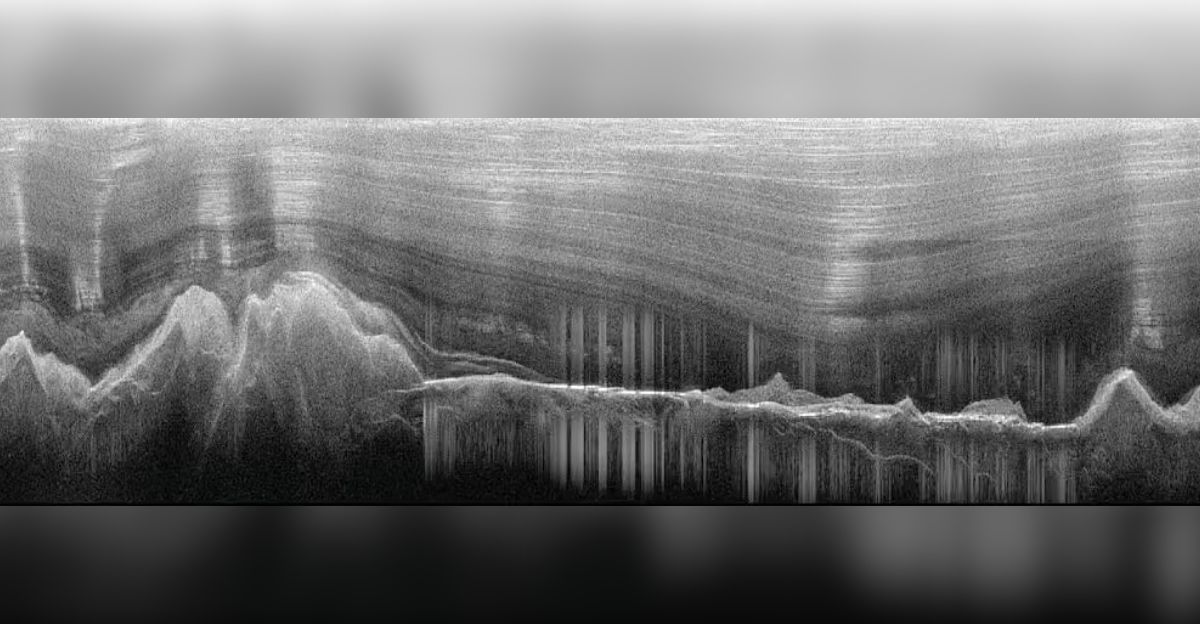
It wasn’t until researchers made more than a superficial surface scan that the Gamburtsev Mountains were understood.
Geologists long comprehended that something had occurred a very, very long time ago—something gigantic. New work by Nathan Daczko and Jacqueline Halpin has finally deciphered the secret.
They opened up mineral time capsules, analyzed structures thousands of kilometers away, and constructed models of ancient Earth. What they found rewrites our understanding of mountain formation—and the history of Antarctica itself.
Born of Fire, Frozen in Ice
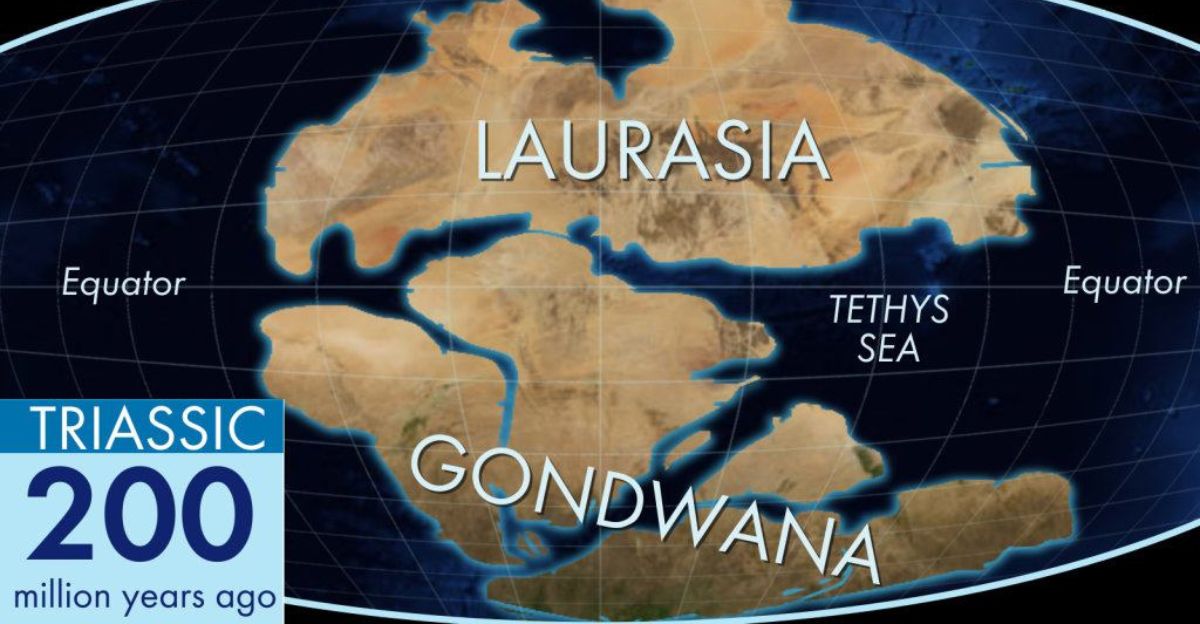
The enigma takes us back more than 500 million years to a period when supercontinents smashed into one another.
The creation of Gondwana—a tremendous landmass that once joined elements of today’s southern continents—could have given rise to the Gamburtsev range. At that time, tectonic forces weren’t silent.
Continental crust was stacked up, partially melted rock rose upward, and the planet’s surface bulged. The mountains attained their maximum height. But then something rather peculiar occurred.
A Collapse That Saved
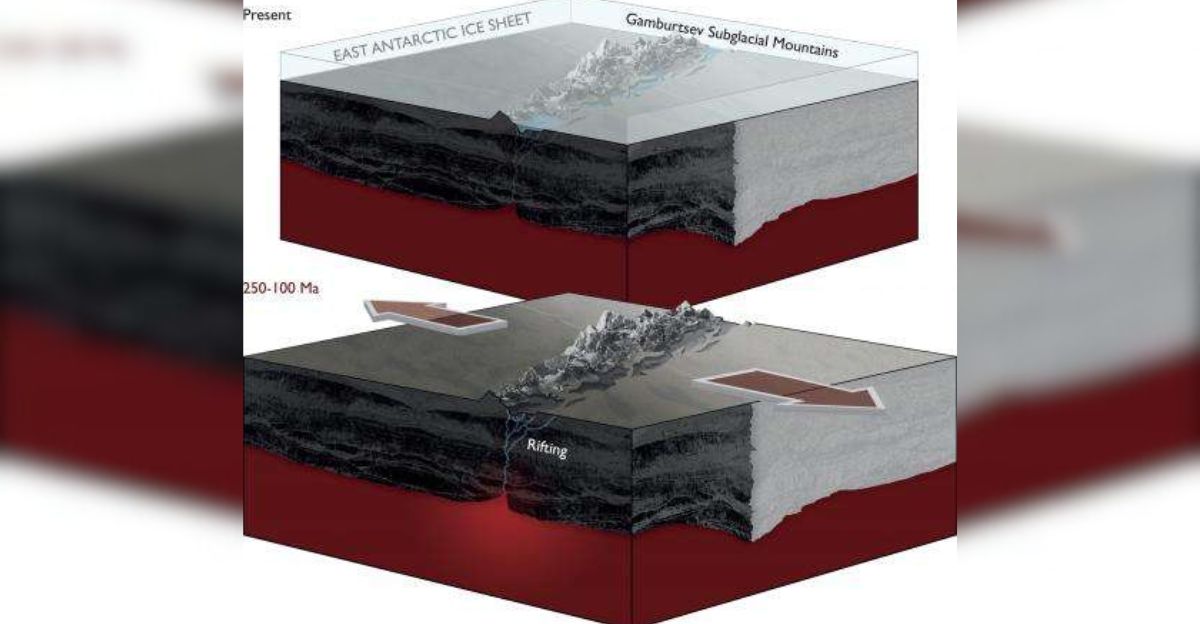
Eventually, the overlying crust rose too thick and started splitting apart due to its own weight—a geologic process known as gravitational spreading.
But even as the surface relaxed and flattened out, a dense “root” of mountain remained stuck deep within the Earth’s mantle.
That root served as a structural anchor, holding the range in place even while the surrounding land sank. Ice finally moved in—serving as a geological freezer safeguarding the mountains through eons of transformation.
Zircons—Time Travelers in Stone
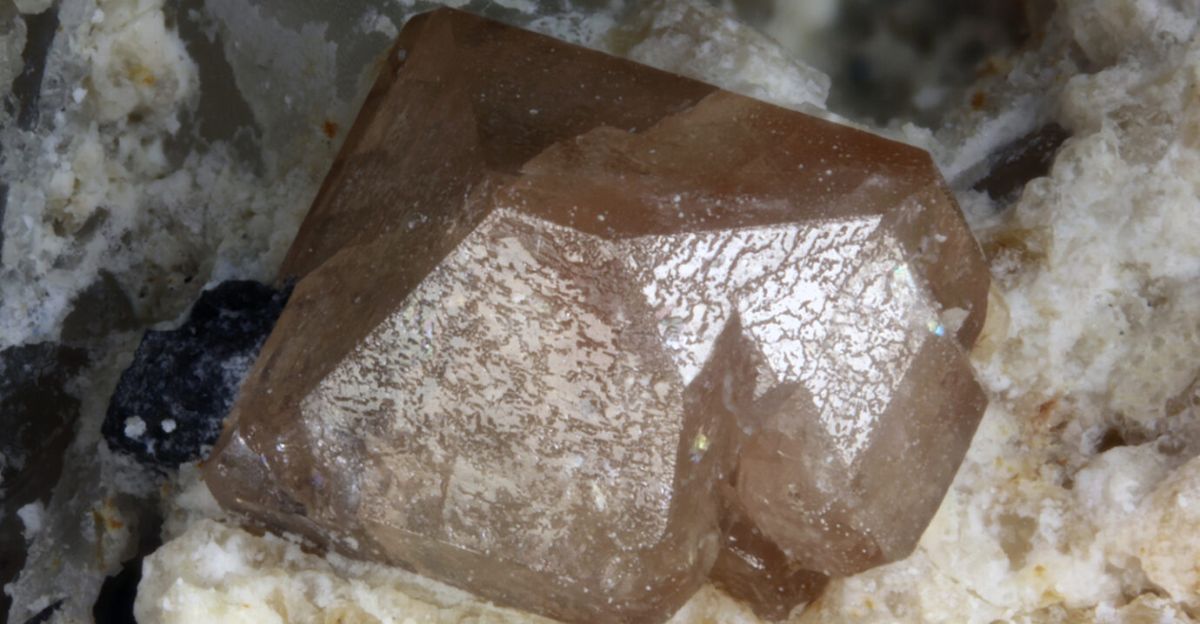
The data is derived from a surprising source: minuscule zircon crystals that are embedded in sandstone in the Prince Charles Mountains.
While far from the Gamburtsev range, the minerals contain chemical signatures that date back to the same period.
Through their composition, scientists were able to identify the summit of the Gamburtsev Mountains—some 580 million years ago. That signifies that the range has been glacial for longer than we thought.
A Rare Geological Anomaly
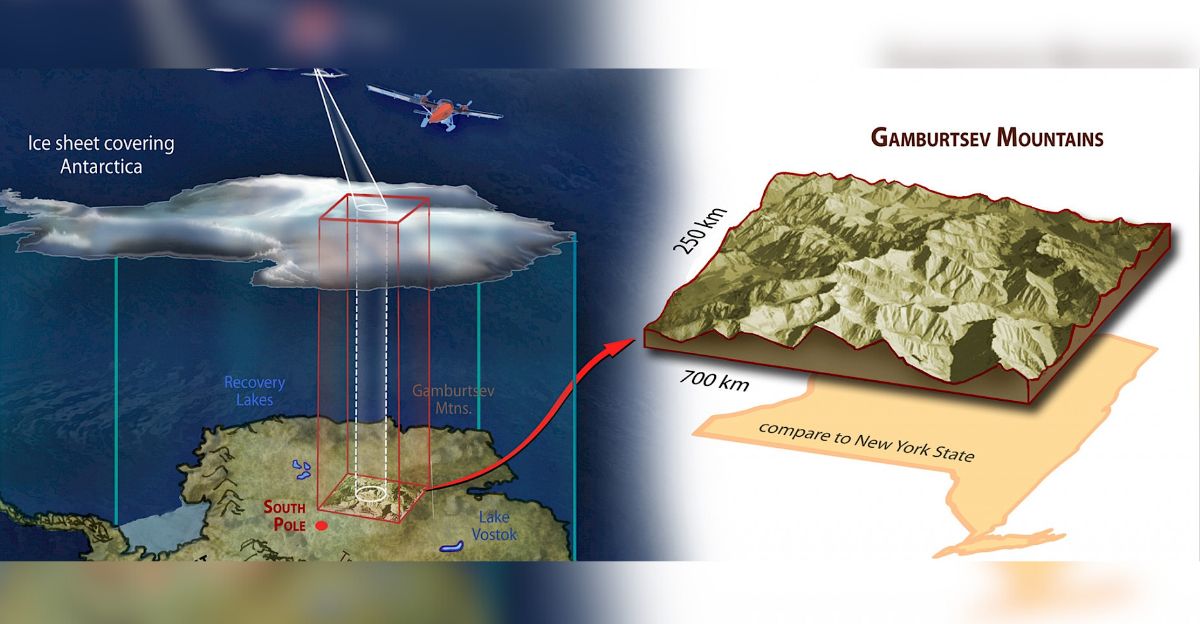
All except the most impenetrable mountain chains will gradually be worn down by wind, rain, and plate tectonics.
The Himalayas, Rockies, and Alps have all been shaped over millions of years. But the Gamburtsev Mountains? Because they’re covered in an icy shield, they’ve been shielded from erosion, tectonic upheaval, and even changing seasons and climates.
That makes them one of the best-preserved ancient mountain systems ever discovered. It’s like nature put them into suspended animation, frozen to perfection, waiting for science to discover them today.
Challenges in the Deep Freeze
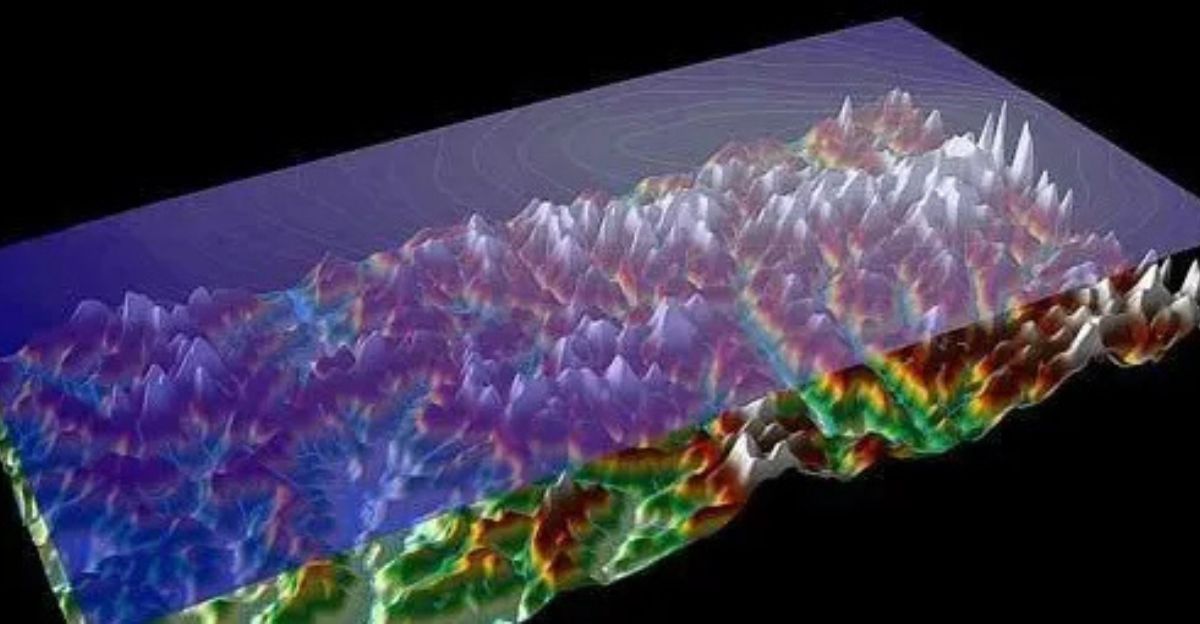
Of course, it’s not possible to study a mountain range under kilometers of hard ice. Drilling down to reach them is very costly and could be dangerous.
Most of what we currently know is exposed by radar images, seismic soundings, and surface rocks near glaciers.
One promising place is the Denman Glacier, where rocks of similar chemistry to the Gamburtsev’s have turned up, offering an intriguing glimpse at the range’s old geology.
Reconstructing the Past
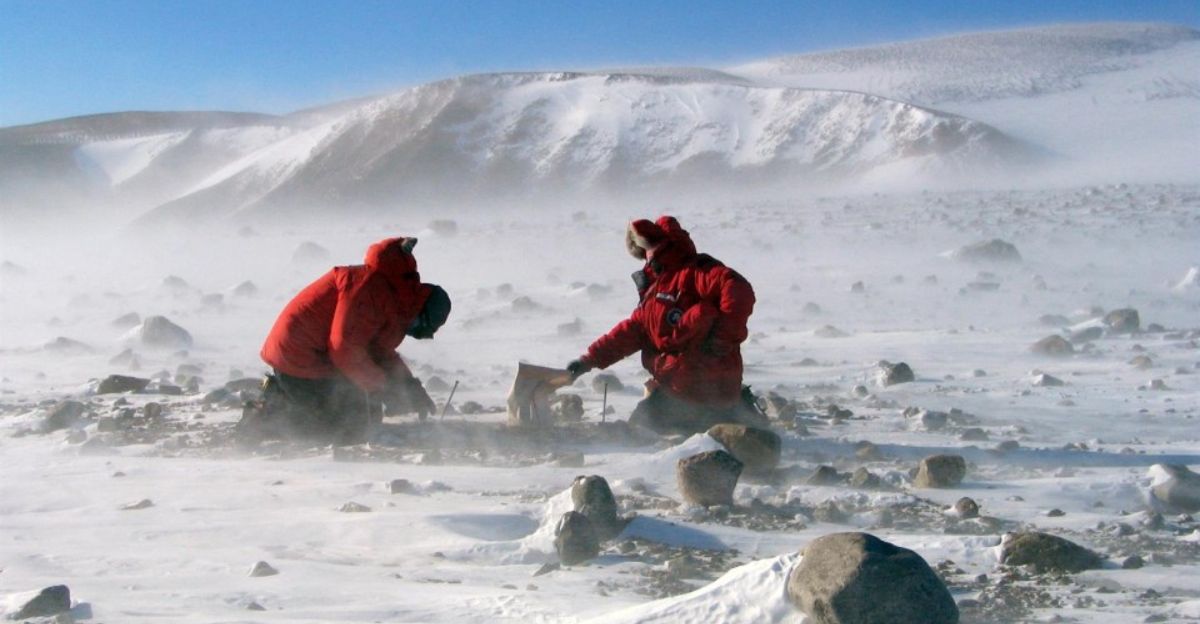
By combining field geology with satellite data and computer modeling, scientists are starting to rebuild East Antarctica as it was half a billion years ago.
It’s an attempt to solve a puzzle with a handful of scattered pieces and no edges. But each discovery—each zircon, each seismic reflection—refines the image further.
The picture that emerges is one of violent creation, quiet slumber, and glacial preservation over thousands of years.
A Glimpse of Gondwana
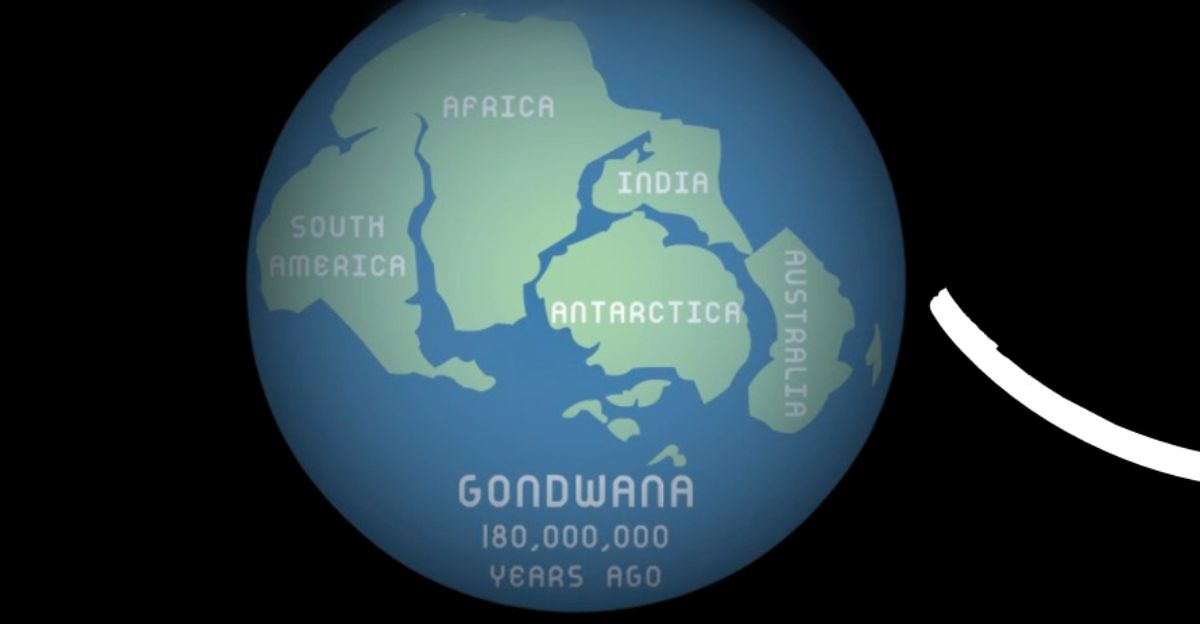
The Gamburtsev Mountains’ importance reaches far into the past. Their history provides the key to understanding how supercontinents such as Gondwana were created—and how forces of ancient times sculpted the continents we inhabit today.
The mountains are a snapshot in time of a collision deep in the Earth’s past, and they tell us how land masses collided, lifted, and ultimately settled into stasis.
Knowing how they were created provides a glimpse into processes that continue to influence Earth’s surface, even today.
The Preserving Power of Ice
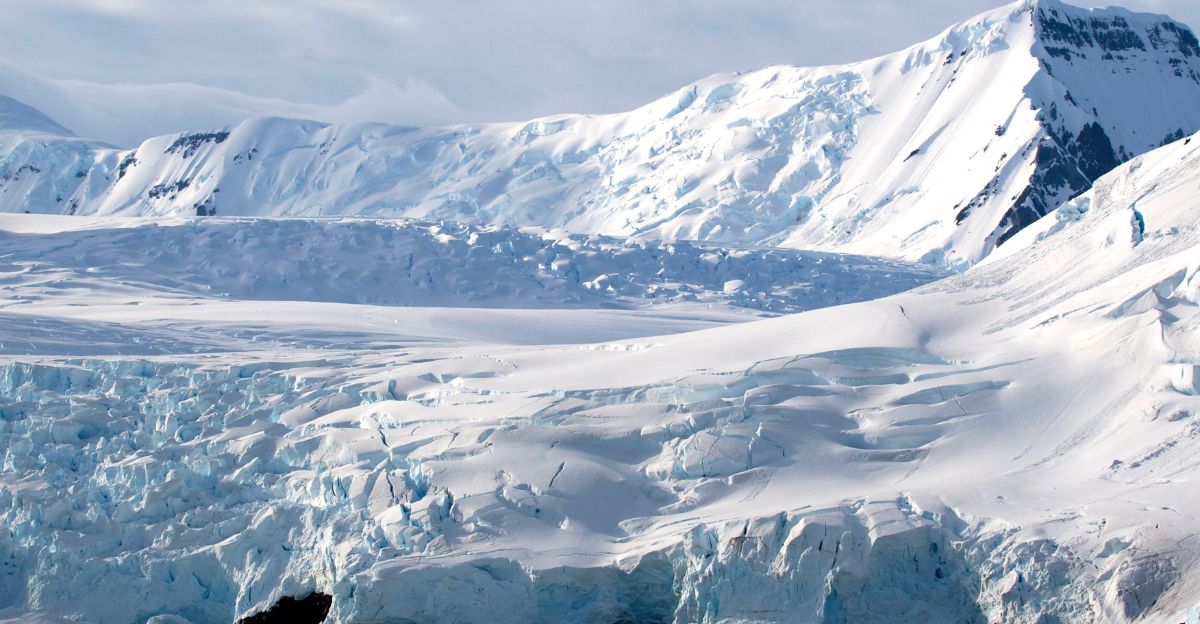
Ironically, the same force that makes Gamburtsev so hard to reach—Ice—is the same force that initially preserved them.
Without the blanket of the East Antarctic Ice Sheet, these mountains may have worn away into plains hundreds of millions of years ago.
Their summits remain stony. Their histories stay readable. Natural preservation on such a scale is an oddity more than an exception—it’s a testament to how much of old Earth still remains hidden (or frozen) in plain sight.
What Comes Next?
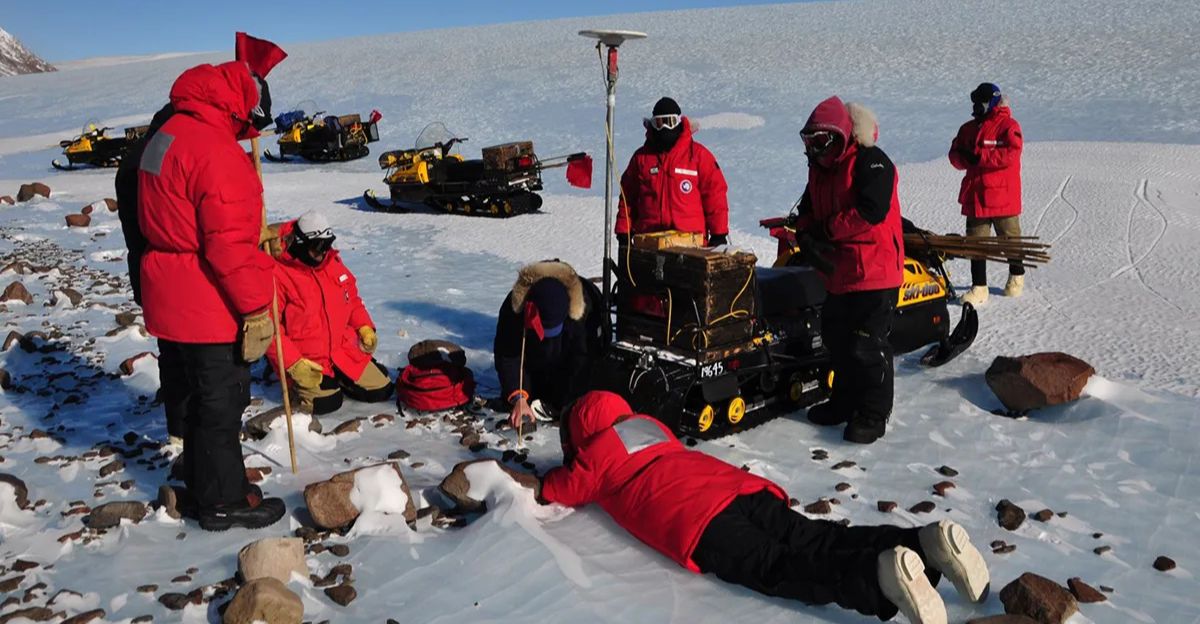
Scientists aren’t done yet. With new technologies like advanced ice-penetrating radar and more penetrating core drilling, researchers hope to uncover more secrets within Antarctica’s buried geology.
What else is buried under the ice? Could there be other overlooked mountain systems, ancient fault systems, or even newly discovered mineral deposits?
Every step forward in the Gamburtsev mystery spawns new missions and new questions. The next decade of Antarctic science could be the most exciting yet.
The Icy Frontier of Discovery
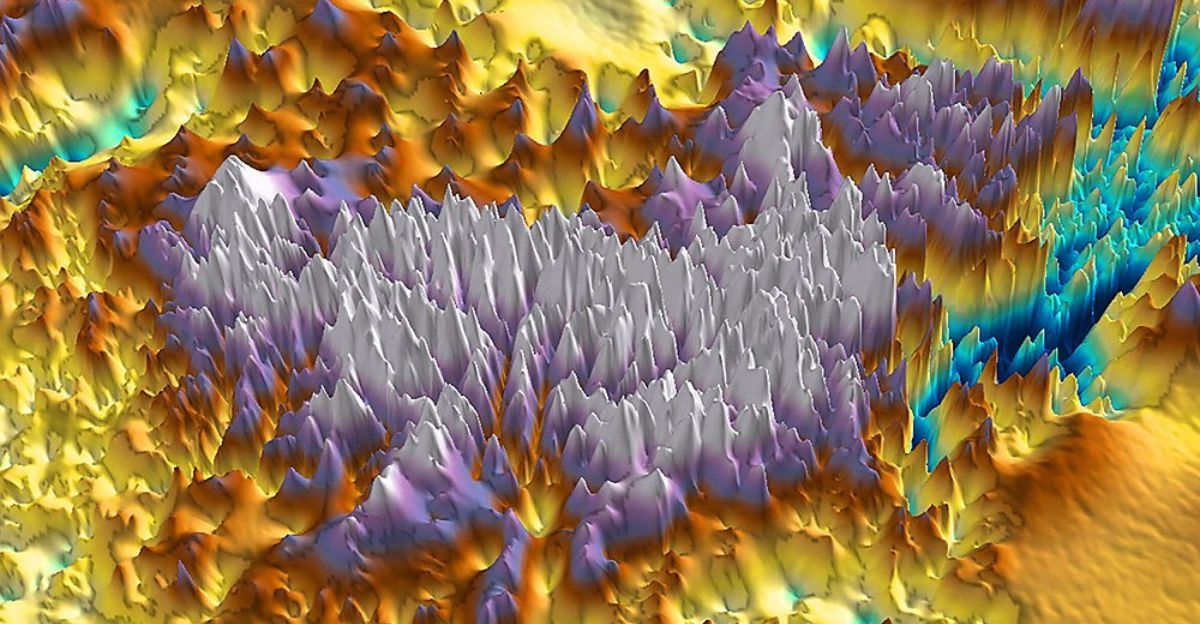
The Gamburtsev Mountains went from being a Cold War fascination to one of Earth’s most fascinating natural histories.
Their discovery and ongoing exploration demonstrate how much remains to be learned about our history. Ancient collisions, time, and geologic survival tales all coincide at the core of Antarctica.
As Daczko and Halpin state: “Antarctica remains full of geological surprises. And the secrets beneath its ice are only beginning to be revealed.”


